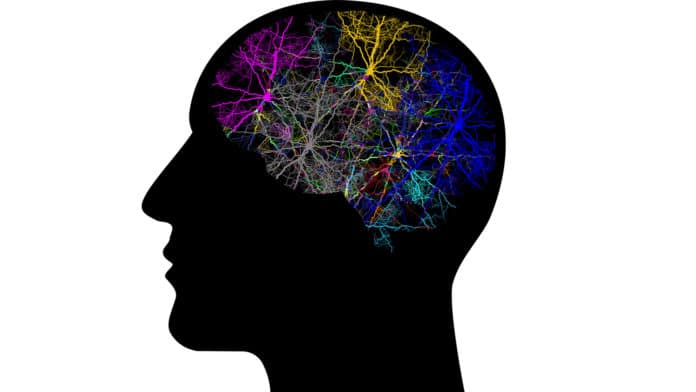For the first time, scientists from the University of Sussex have developed a modular quantum brain scanner to record brain signals. For those working on developing quantum brain imaging technology, this work comes as a significant milestone.
The device uses ultra-sensitive quantum sensors to pick up these tiniest magnetic fields to see inside the brain to map neural activity. As the devices work like play bricks, when connected, the work opens up the potential for whole-brain scanning using quantum technology.
The sensor uses an optically pumped magnetometer inside a magnetic shield to reduce environmental magnetic fields. In other words, it works by putting a vapor into a quantum state, shining a laser beam through it, and using a photodetector to see how much light has gone through.
How the atomic vapor interacts with the laser light very sensitively depends on the magnetic field. This is because the tiny electric currents in the neurons in the brain lead to very small magnetic fields even outside the brain, which is what the sensor picks up.
For testing their scanner, scientists applied the sensors to outside of a participant’s scalp, close to the brain’s visual cortex. They then asked participants to open and close their eyes every 10–20 seconds. Scientists were able to detect a signal.
However, this was quite easy task, but understanding what’s going on inside the brain from outside requires advanced quantum technology.
Thomas Coussens, a Ph.D. student at the University of Sussex, who built the sensor, explained:
“Our quantum sensor has to be exceptionally sensitive to pick up the magnetic fields in the brain, which are very weak indeed. To put it into context, the magnetic field of a brain is a trillion times lower than that of a fridge magnet.”
“Because our device is so-far unique in that it is modular—and we’ve shown the modularity works by connecting two sensors—we now plan to scale up this project by building more sensors to turn this into an entire brain imaging system. This could provide significant advancements in detecting and delivering treatment for neurodegenerative diseases such as Alzheimer’s.”
“This is the culmination of many months of hard work, and I am thrilled to see our first brain signal using our very own quantum sensors built entirely by us here at the University of Sussex.”
Professor Peter Krüger, Experimental Physicist and Director of the Sussex Programme for Quantum Research at the University of Sussex, explained:
“As our sensor works on a modular basis, we will now be able to scale it up to create much more detailed images of the brain or parts of the brain. You can’t do that with the current commercial product available. So this new sensor built at the University of Sussex opens the door for UK-produced quantum sensors, hugely influential in the wider UK quantum technology landscape.”
“To have this sensor is a major step to further interdisciplinary studies involving researchers ranging from consciousness scientists and engineers to neuroscientists, which is very much in the spirit of how we tackle research here at Sussex.”
Professor Kai Bongs, Principal Investigator at the UK Quantum Technology Hub Sensors and Timing, said:
“We are delighted with this ground-breaking development by Hub researchers at the University of Sussex. These successes are helping considerably to advance the UK quantum ecosystem, bringing us a step closer to exploiting quantum sensor technology in clinical applications that will have a real societal impact. Building a strong quantum brain imaging capability in the UK is a great example of our collaboration.”
Journal Reference:
- Thomas Coussens et al., Modular optically-pumped magnetometer system. arXiv:2106.05877
